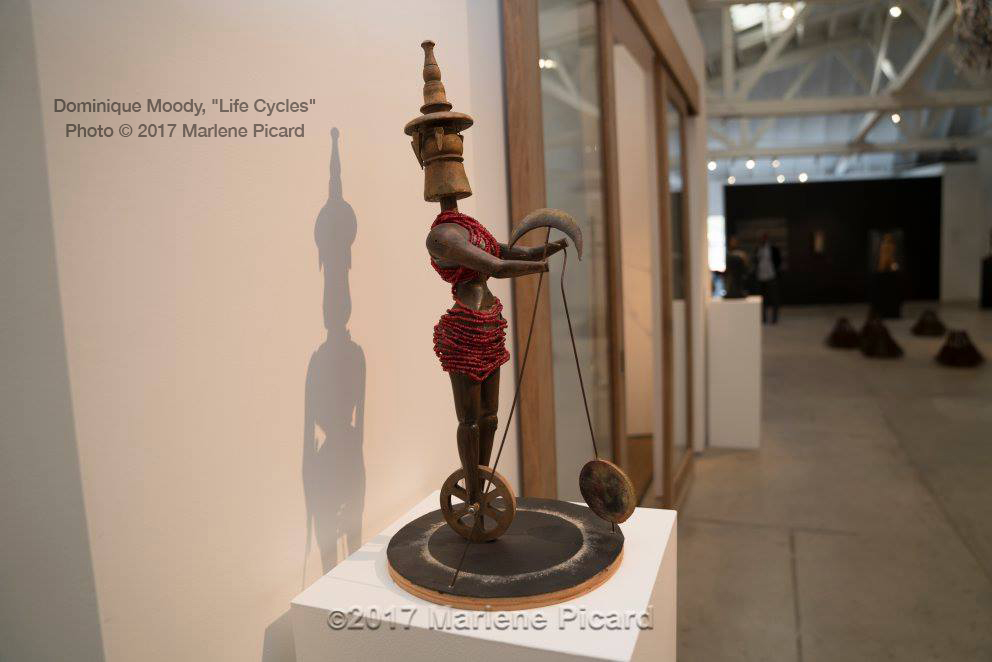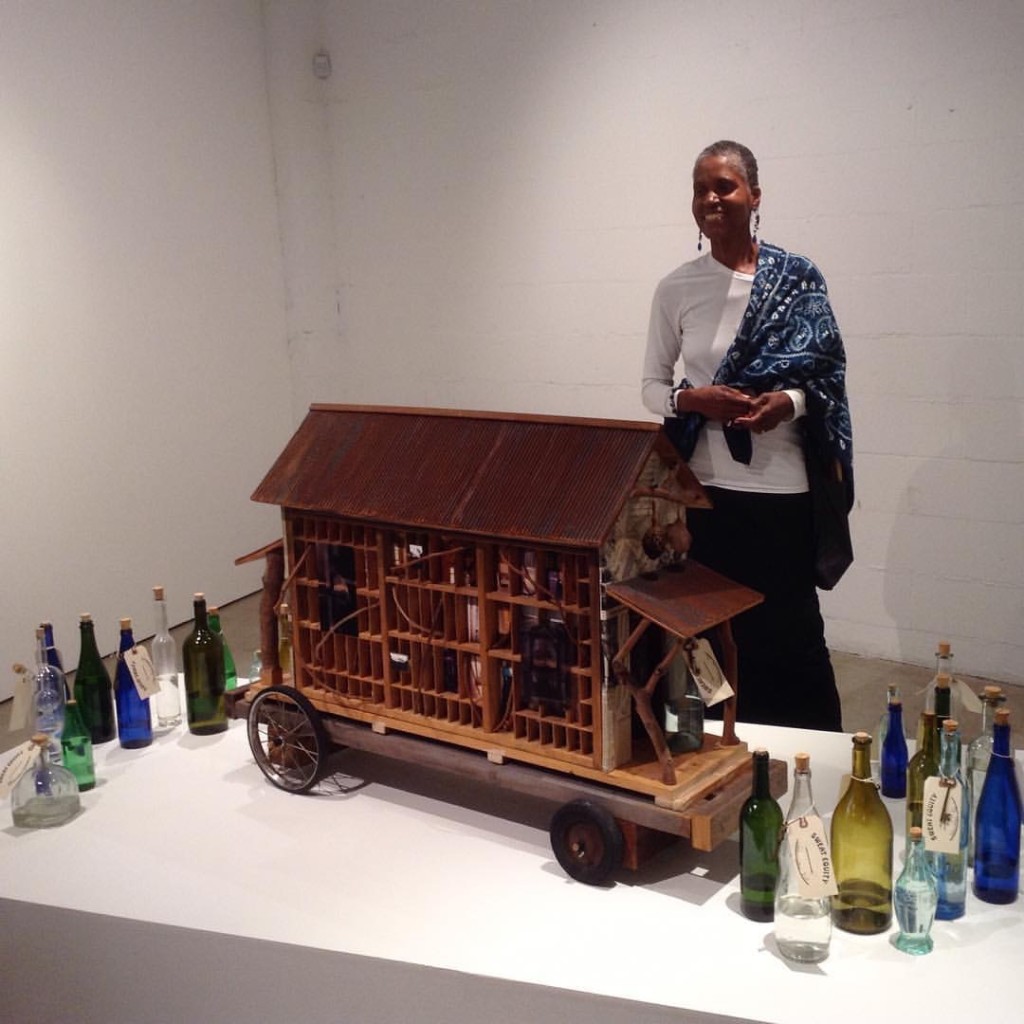Dominique Moody stands next to “Sweat Equity” at the Landing Gallery
Photo credit: The Landing gallery
Signifying Form Exhibition curated by jill moniz, has been extended until July 1 2017.
Dominique Moody’s works, Sweat Equity and Life Cycles are on view and available for sale through the Landing gallery, in Culver City.
For more information about the Landing gallery:
www.thelandinggallery.com
Read the full press release here:
www.thelandinggallery.com/signifying-form-press-release
——————————————-
Dominique Moody Artist Essary by Chelle Barbour:
Dominique Moody is a self-described nomad. She was born into a military family in Augsburg, Germany that peripatetically hopscotched from place to place. She was one of nine children who enjoyed collecting discarded objects. Moody finished high school when she was fifteen and enrolled at Pratt Institute. In 1991, she graduated UC Berkeley, Phi Beta Kappa in Fine Arts. At the age of twenty-eight, she succumbed to legal blindness due to genetic macular degeneration, which weakened her central eyesight. Moody’s work shifted from two-dimensional realistic illustration to three-dimensional sculpture. After years of sharpening her peripheral vision and memory, Moody has established a vigorous assemblage/collage practice in Los Angeles.
Over Moody’s lifetime, she relocated forty-eight times. Her roving life became the foundation for crafting her most narrative work to date; a tiny home called The Nomad, 2014. The 160 square foot dwelling doubles as a compact public art piece. It is assembled out of repurposed materials and designed with architectural precision, clean lines and attention to detail. Audiences that follow the emerging tiny house movement connect deeply with Moody’s process. In late fall of 2014, during a bustling night in Leimert Park, an African American cultural hub in Los Angeles, The Nomad was parked on the street across from the Vision Theatre, where Moody was having an open house. She welcomed everyone into her mobile conversation piece. She spoke passionately about the tiny house, the function and process, and the sweat equity required to bring the concept to fruition.
What comes to mind when we think of sweat equity is the unpaid labor that individuals contribute to increase the value of a project or real estate. Moody’s, Sweat Equity, 2005 is a three-dimensional mixed media artwork. Sweat Equity contains remnants of newsprint, found objects, corrugated metal siding, twigs, and a slot wall with gaps functioning as windows. Small images of houses, trailers and other personal effects are deliberately displayed. Moody inserts her photograph that confidently stares out of the window to signify that she is finally in possession of her own home using her sweat equity. Multi-colored glass bottles are placed around the dwelling as allegories, to convey that they not only carry the phrase “sweat equity”, but also function as containers that hold metaphoric sweat. The bottles are signifiers with an ingrained spiritual connotation. Based on African diaspora folklore, tinted bottles were talismans placed in trees outside the home for protection. This custom “originated in the kingdom of Kongo on the West African coast as early as 1776…and was adopted in southern states as a Creole origination”.1
Moody’s allegorical piece, Life Cycles, 2009, explores the notion of eternity, regeneration and the cycle of life-from birth to death. Existence is itself a state of perpetual motion. Life Cycles is a wooden female figurine clothed in a short beaded red dress. An African mask-like headdress crowns her. A staff topped by a crescent moon in one hand stabilizes her, and in the other hand is a divining rod with a cylindrical disk that circumnavigates what appears to be a lunar eclipse. Central to this piece is the link between the color red, monthly menses, fertility, procreation and the power of women.
Moody is consistent in her approach to details using her inventory of found objects, employing the process of elimination and making art historical references that reflect these rational choices. The overall aesthetic and construction of Life Cycles is reminiscent of the work of Oskar Schlemmer, a German designer, painter and sculptor. Schlemmer worked in association with the Bauhaus school in Weimar, Germany, and is known for elaborate spherical and cylindrical costumes that transformed dancers into artificial statuettes for the Das Triadisches Ballett (Triad Ballet). Schlemmer took live performers and transformed them into sculptural form, while Moody takes sculpture and suggests movement by placing this figure on a wheel, which rolls around the universe representing existence itself. Sweat Equity, 2005 and Life Cycles, 2009, places Dominique Moody among the giants of African American artists working in assemblage, Noah Purifoy, Betye Saar, John Outterbridge, and David Hammons.
Chelle Barbour
Interdisciplinary Artist, Curator, Entrepreneur
1 Joe Cialdella and Enid A. Haupt, Fellow. The American Bottle Tree, 2013
The American Bottle Tree

